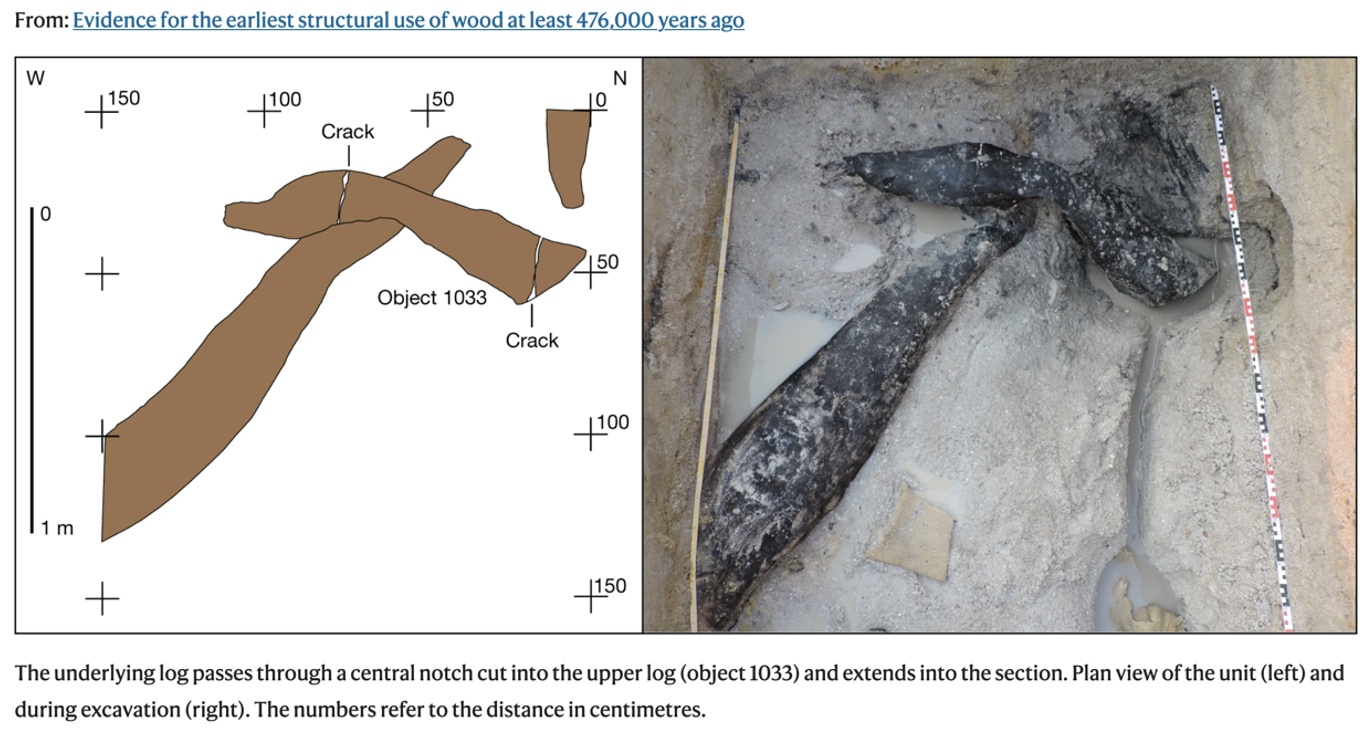Despite all archaeologists have found, the deep past is still mysterious. The knowledge we do have is limited to our interpretations of artifacts, paintings, and structures that manage to remain preserved for sometimes hundreds of thousands of years. Unearthing anything from the ancient and prehistoric past that humans created is exciting, and often these finds stroke our egos and feed our self-created narrative that we, Homo sapiens, are superior to all other lifeforms, extinct and living, on Earth.
But sometimes, archaeologists find something that challenges everything we thought we knew about the past – and our place in it. Such is the outcome of two logs discovered near a river in Zambia. They may not seem like much at first, but the arrangement, markings, and age of these logs indicate that we aren’t the only Human species to build structures made of wood – and that our human ancestors may have been more intelligent than we give them credit for.
The Study
An international team of researchers, led by Larry Barham, an archaeologist at the University of Liverpool in England, first made their discovery in 2019 and published their findings in September 2023 in the journal Nature. The study is a project of Deep Roots Humanity, which investigates the development of technology during the Stone Age and is funded by the United Kingdom’s Arts and Humanities Research Council.
The team hit the jackpot near a waterfall along the Kalambo River in Zambia, where they unearthed five wooden objects with evidence of intentional modification in the sediment near the river. Some of the objects were likely used as a wedge or a tool for digging, but they also found a stick and a tip that fit together.
However, their history-changing find was the pair of logs that were modified to be linked together, similar to the children’s toy, Lincoln Logs. Barham and his team theorize the wood may have been part of a raised surface or platform above the muddy riverbanks.

To date their discovery, the researchers used optically stimulated luminescence. This technique determines when grains of feldspar and quartz found in the adjacent sediment were last exposed to sunlight. According to the results, it’s been 476,000 years since the grains – and the logs the team found nearby – saw daylight.
Why This Find is So Incredible
One of the reasons experts are excited about the logs is that wooden artifacts don’t usually survive for millennia (let alone hundreds of thousands of them) because the material tends to decompose and disappear. In this case, the researchers think the continually high river water levels may have preserved the logs.
This isn’t the first time archaeologists have found wooden artifacts, nor are they the oldest wooden artifacts ever discovered. The researchers note in their paper that a piece of a polished plank dating to over 780,000 years ago was found in Israel, and wooden tools likely used for hunting and foraging have been unearthed worldwide, some dating to over 400,000 years ago. But these examples, while impressive, only hint at the minimal craftsmanship abilities of ancient Humans.
Previously at Italy’s Ministry of Culture, archaeologist Biancamaria Aranguren, who studies tools found in Tuscany that are credited to early Neandertals, told Scientific American:
“Our knowledge about the use and the processing of wood in the most ancient periods of prehistory is comparable to the tip of an iceberg.”
Beyond the fact that the linked logs Barham and his team found managed to survive to modern times, what makes the logs even more interesting is that they demolished the previous record for the oldest wooden structure. Barham points out that the previously known oldest wooden structure was made only 9,000 years ago – meaning the new discovery beats the last record by hundreds of thousands of years.
But This Means…
Wait a minute. We, Homo sapiens, have only been around for about 300,000 years. So that means, as Barham told Scientific American, the logs the team found “predate the earliest fossils of Homo sapiens in Africa, which are about 330,000 years old.” This means that whoever shaped and assembled the logs, and built the platform wasn’t us, but more likely another Human species that walked the Earth before we evolved. Barham told the publication:
“This is a disruptive discovery. I never would have thought that pre-Homo sapiens would have had the capacity to plan something like this.”
Based on the timelines of the other known Human species that predate us, Barham, who is also the study’s lead author, says multiple species could have built the wooden structure they found. He suggests it may have been Homo erectus, which is the longest-living Human species that lived between 2 million and 100,000 years ago. Though, it might have been Homo heidelbergensis which lived between 700,000 and 200,000 years ago.
The researchers don’t discount the possibility that very early members of our own species could have made the structure, but they think it’s unlikely. As Barham told Scientific American,
“We like to think that anything complex and clever has got to be us, which is kind of arrogant.”
Perspective Shift
I gotta say, I agree with Barham. The more we learn about the past and other life forms on this planet, the more it seems that we Homo sapiens aren’t as superior as we like to think. Discoveries like the logs in Zambia are just one of a growing list of archaeological finds indicating that we learned many of the attributes we credit to our species from others. If anything, instead of claiming we invented making and using tools, creating art, and now building structures, our true talents are in observing and adopting the practices of other cultures and life forms for our own communities.
Regardless, it’s still fascinating to know that our Human cousins once occupied that spot near a towering waterfall and constructed a platform along the river. Whenever we find something from the ancient past, there’s a somewhat magical sensation in knowing someone lived there long ago, like a snapshot of history and a reminder that we weren’t the first ones here.






